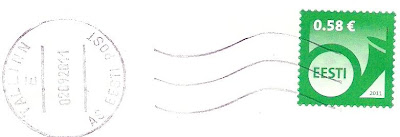 STELLENBOSCH
STELLENBOSCHThe university town of Stellenbosch, famous for its wines and specctacular mountain scenery, has many fine examples of architecture dating back to the early 1800'2.
One of the five postcards sent by
Whardah from Cape Town, South Africa.
This is from Wikipedia :
Stellenbosch ( /ˈstɛlənbɒs/) is a town in the Western Cape province of South Africa, situated about 50 kilometres (30 miles) east of Cape Town, along the banks of the Eerste Rivier. It is the second oldest European settlement in the province, after Cape Town. The town became known as the City of Oaks or Eikestad in Afrikaans and Dutch due to the large number of oak trees that were planted by its founder, Simon van der Stel, to grace the streets and homesteads.
Stellenbosch has its own municipality (incorporating the neighbouring towns of Pniel and Franschhoek), adjoining the greater/metro area of the city of Cape Town. The town is home to Stellenbosch University. Technopark is a modern science park situated on the southern side of the town near the Stellenbosch Golf Course.
The town was founded in 1679 by the Governor of the Cape Colony, Simon van der Stel, who named it after himself — Stellenbosch means "(van der) Stel's forest". It is situated on the banks of the Eerste Rivier ("First River"), so named as it was the first new river he reached and followed when he went on an expedition over the Cape Flats to explore the territory towards what is now known as Stellenbosch. The town grew so quickly that it became an independent local authority in 1682 and the seat of a magistrate with jurisdiction over 25,000 square kilometers (9,700 sq mi) in 1685.
The Dutch were skilled in hydraulic engineering and they devised a system of furrows to direct water from the Eerste Rivier in the vicinity of Thibault Street through the town along van Riebeeck Street to Mill Street where a mill was erected. Early visitors commented on the oak trees and gardens.
During 1690 some Huguenot refugees settled in Stellenbosch, grapes were planted in the fertile valleys around Stellenbosch and soon it became the centre of the South African wine industry.
In 1710 a fire destroyed most of the town and including all the Company property and twelve houses. Only two or three houses were left standing.
The first school had been opened in 1683 but education in the town began in earnest in 1859 with the opening of a seminary for the Dutch Reformed Church. Rhenish Girls' High School, established in 1860, is the oldest school for girls in South Africa. A gymnasium which was known as het Stellenbossche Gymnasium was established in 1866. In 1874 some higher classes became Victoria College and then in 1918 University of Stellenbosch. The first men's hostel to be established in Stellenbosch was Wilgenhof, in 1903. In 1909 an old boy of the school, Paul Roos, captain of the first national rugby team to be called the Springboks, was invited to become the sixth rector of the school. He remained rector till 1940. On his retirement the school's name was changed to Paul Roos Gymnasium.
In the early days of the Second Boer War (1899–1902) Stellenbosch was one of the British military bases, and was used as a 'remount' camp; and in consequence of officers who had not distinguished themselves at the front being sent back to it, the expression 'to be Stellenbosched' came into use; so much so, that in similar cases officers were spoken of as 'Stellenbosched' even if they were sent to some other place.













































